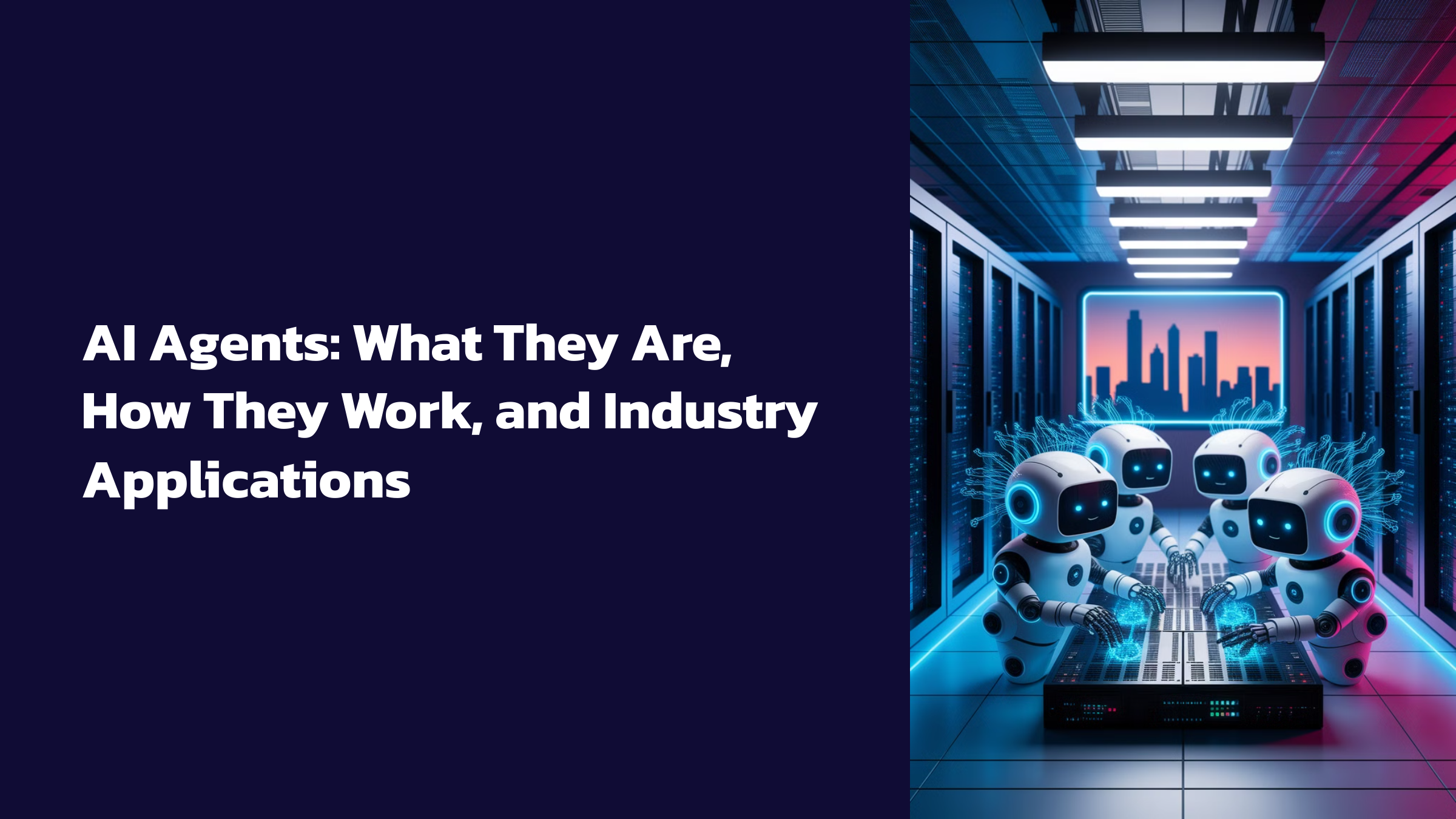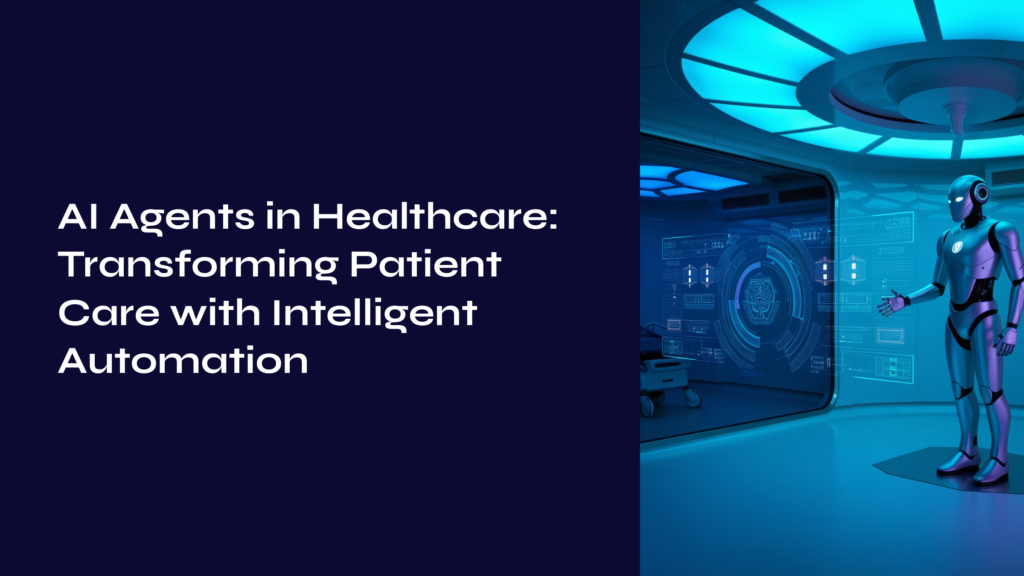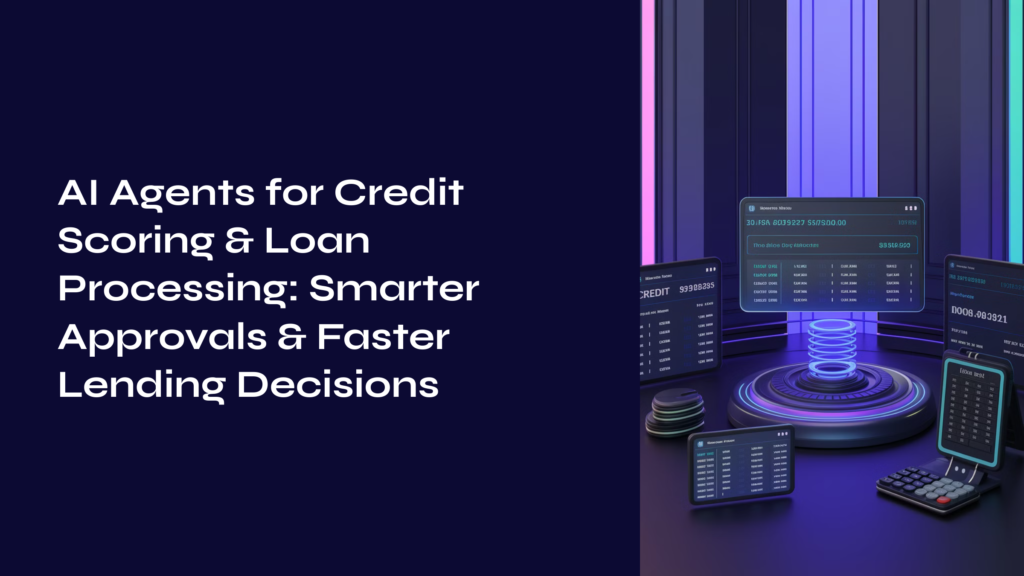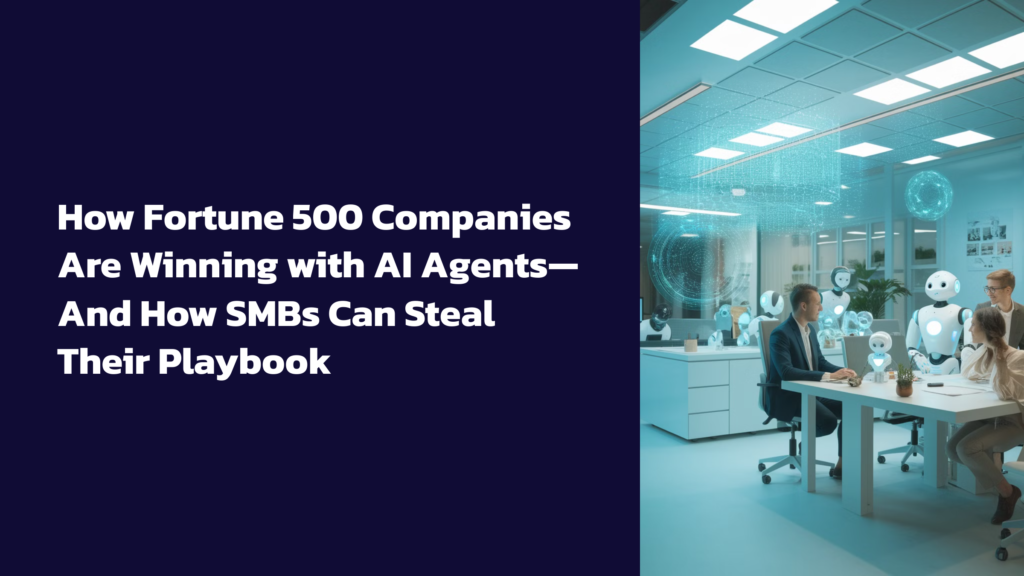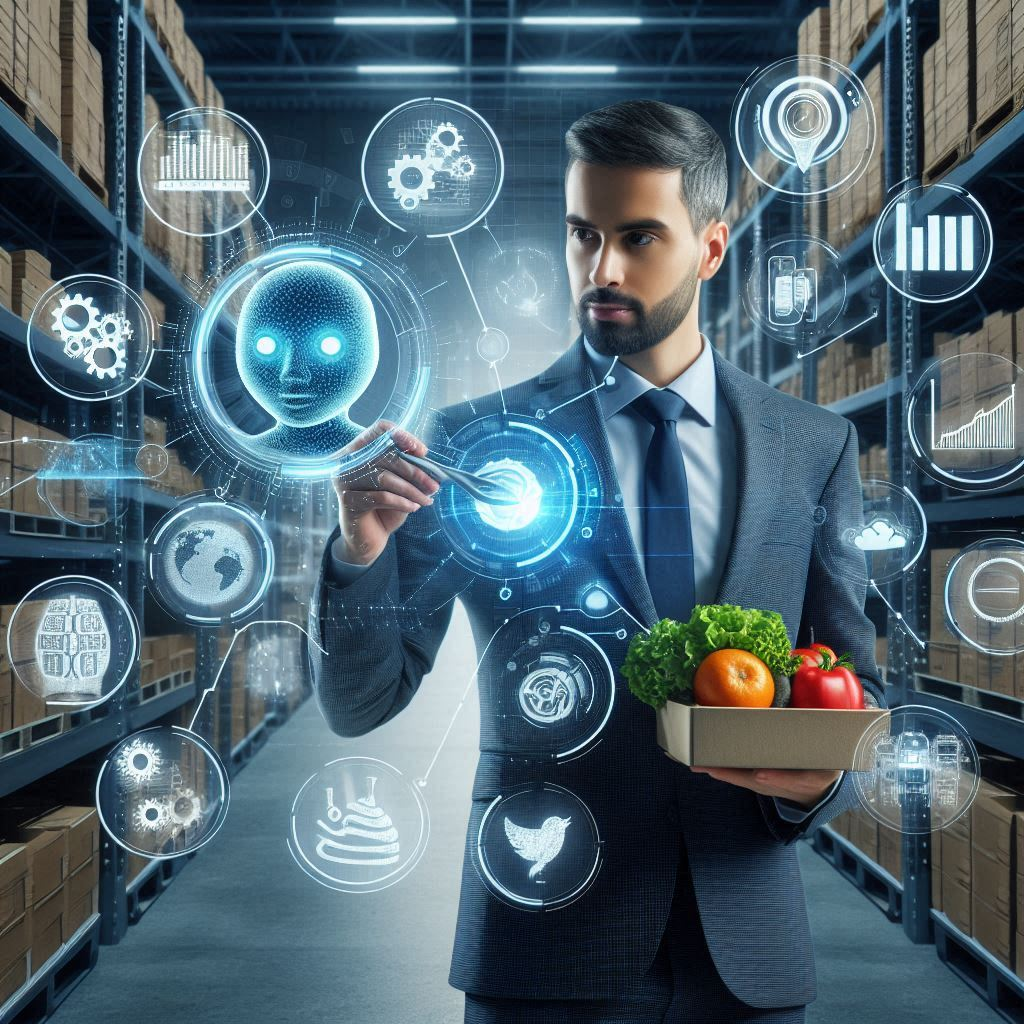As automation and intelligence reshape business landscapes, AI agents have become essential drivers of innovation across industries. These autonomous systems go beyond streamlining operations—they enhance decision-making, personalize customer interactions, and optimize efficiency. By learning and adapting in real time, AI agents are redefining how organizations operate.
This article explores the fundamentals of AI agents, their underlying mechanisms, and their transformative applications in key sectors.
What Are AI Agents?
Definition
An AI agent is a software entity that autonomously perceives its environment, processes data, and takes actions to achieve specific goals. Unlike traditional programs, AI agents learn, adapt, and make decisions with minimal human intervention.
Key Characteristics
- Autonomy: Operate independently once deployed.
- Perception: Use sensors, APIs, or data inputs to understand their environment.
- Decision-Making: Leverage algorithms to analyze data and choose optimal actions.
- Adaptability: Improve performance over time through machine learning.
Examples
- Chatbots handling customer queries.
- Recommendation engines on streaming platforms.
- Autonomous drones in logistics.
Types of AI Agents
AI agents differ in their complexity and functionality, ranging from simple rule-based systems to sophisticated autonomous decision-makers. Below are the primary categories:
1. Reactive Agents
- Function: React to real-time inputs without memory or long-term planning. They make decisions based solely on the current state.
- Example: A chess-playing AI that evaluates the board and chooses the best move without recalling past moves.
- Use Case: Basic customer service chatbots, real-time monitoring systems, or simple recommendation engines.
2. Deliberative (Goal-Based) Agents
- Function: Use an internal model of the environment to plan and execute actions aimed at achieving specific goals.
- Example: An autonomous delivery robot that evaluates multiple routes and selects the most efficient one while avoiding obstacles.
- Use Case: Route planning in logistics, strategic decision-making in business operations, and automated financial advising.
3. Hybrid Agents
- Function: Combine reactive and deliberative capabilities to make balanced, context-aware decisions.
- Example: A self-driving car that reacts instantly to traffic conditions (reactive) while simultaneously planning an optimized route (deliberative).
- Use Case: AI-powered medical diagnostic systems, robotic process automation (RPA), and complex decision-support systems.
4. Autonomous Agents
- Function: Operate independently, continuously learning from interactions to improve their decision-making over time.
- Example: AI-powered trading bots that adjust investment strategies based on market trends and past performance.
- Use Case: Personalized marketing campaigns, predictive maintenance in manufacturing, and adaptive cybersecurity defense systems.
5. Collaborative (Multi-Agent) Systems
- Function: Multiple AI agents work together, communicating and coordinating to solve complex tasks more efficiently.
- Example: Smart grid systems where AI agents distribute energy loads across different power stations to optimize efficiency.
- Use Case: Disaster response coordination, swarm robotics (e.g., drone fleets for search-and-rescue), and intelligent supply chain networks.
How Do AI Agents Work?
AI agents leverage advanced technologies to perceive, process, decide, and act, refining their capabilities through structured workflows and continuous learning.
Core Technologies
AI agents rely on several key technologies that power their decision-making and adaptability:
- Machine Learning (ML): Enables agents to analyze data, recognize patterns, and make predictions. For example, ML helps AI agents classify emails as spam or non-spam.
- Natural Language Processing (NLP): Allows AI agents to understand and generate human language, making chatbots, virtual assistants, and sentiment analysis possible.
- Computer Vision: Enables AI agents to interpret and process visual data from images or videos. This is crucial in applications like facial recognition, medical imaging analysis, and quality control in manufacturing.
- Reinforcement Learning: Trains AI agents to optimize actions through trial and error, using rewards and penalties. This technique is widely used in robotics, gaming AI, and autonomous vehicles.
Workflow of AI Agents
AI agents follow a structured workflow to process information and take meaningful actions:
- Input: The agent gathers data from various sources, such as sensors, databases, APIs, or user interactions.
- Processing: The collected data is analyzed using machine learning models, rule-based systems, or statistical methods to extract insights.
- Decision-Making: The agent determines the best course of action based on predefined objectives, such as maximizing efficiency, improving accuracy, or enhancing user experience.
- Action Execution: The agent carries out the chosen action, which may include sending alerts, modifying system parameters, executing tasks, or interacting with users through chatbots or automation tools.
Learning Mechanisms
To improve performance over time, AI agents employ various learning methods:
- Supervised Learning: The agent is trained using labeled data, where it learns to associate inputs with correct outputs. Example: Email filtering systems trained to detect spam based on past examples.
- Unsupervised Learning: The agent identifies patterns and structures in unlabeled data without explicit guidance. Example: Customer segmentation in marketing, where AI groups customers based on purchasing behavior.
- Reinforcement Learning: The agent learns by interacting with its environment and receiving rewards or penalties based on its actions. Example: AI-powered game-playing systems like DeepMind’s AlphaGo, which learns to win games through self-play.
Industry Applications of AI Agents
AI agents are revolutionizing industries by automating processes, providing data-driven insights, and enabling intelligent decision-making. Here’s how AI is making an impact across various sectors:
Healthcare
1.Challenges: Diagnostic errors, resource inefficiencies, and patient monitoring gaps.
2.Solutions:
- Diagnostic Agents: Analyze X-rays, MRIs, and lab reports to detect anomalies with high accuracy.
- Virtual Nursing Assistants: Monitor patient vitals, send medication reminders, and provide health insights.
3.Impact: Reduces diagnostic time by 30%, enhances patient care quality, and improves treatment outcomes.
Finance
1. Challenges: Fraudulent transactions, inefficient investment management, and compliance risks.
2. Solutions:
- Fraud Detection Agents: Use real-time anomaly detection to flag suspicious activities.
- Robo-Advisors: Analyze financial trends and create personalized investment portfolios.
3. Impact: Lowers fraud losses by 50%, improves investment accuracy, and ensures regulatory compliance.
E-Commerce
1. Challenges: Impersonal shopping experiences, inefficient inventory management, and high cart abandonment rates.
2. Solutions:
- Recommendation Agents: Suggest personalized products based on browsing and purchase history.
- Inventory Management Agents: Use machine learning to predict demand and optimize stock levels.
3. Impact: Increases conversion rates by 25%, reduces overstock costs, and enhances customer engagement.
Manufacturing
1. Challenges: Equipment failures, quality control inefficiencies, and high production costs.
2. Solutions:
- Predictive Maintenance Agents: Analyze IoT sensor data to forecast machinery failures and prevent downtime.
- Quality Control Agents: Use computer vision to inspect products and detect defects.
3. Impact: Reduces downtime by 40%, enhances product quality, and improves operational efficiency.
Customer Service
1. Challenges: High response times, inconsistent support, and customer dissatisfaction.
2. Solutions:
- NLP-Powered Chatbots: Provide instant, multilingual customer support.
- Sentiment Analysis Agents: Detect frustration in conversations and escalate issues to human agents.
3. Impact: Reduces response times by 70%, increases customer satisfaction, and streamlines support operations.
Beauty and Personal Care
1. Challenges: Limited personalized recommendations, high product return rates, and inefficient customer engagement.
2. Solutions:
- AI Skin Analysis Agents: Assess skin conditions and recommend tailored skincare products.
- Virtual Try-On Agents: Use augmented reality (AR) to let customers test makeup shades digitally.
3. Impact: Enhances customer experience, increases product match accuracy, and reduces return rates.
Food and Beverage
1. Challenges: Food waste, fluctuating demand, and inefficient supply chain management.
2. Solutions:
- Demand Forecasting Agents: Predict sales trends to optimize inventory and reduce waste.
- AI-Powered Recipe Assistants: Personalize meal recommendations based on dietary preferences.
3. Impact: Reduces food waste by 30%, improves supply chain efficiency, and enhances customer satisfaction.
Fashion and Apparel
1. Challenges: High return rates, lack of personalization, and counterfeit products.
2. Solutions:
- Virtual Fitting Agents: Use AI-powered 3D modeling to help customers find the perfect fit.
- Counterfeit Detection Agents: Identify fake products using image recognition technology.
3. Impact: Decreases return rates, enhances personalization, and protects brand authenticity.
Consumer Electronics
1. Challenges: Technical support inefficiencies, high product return rates, and lack of proactive maintenance.
2. Solutions:
- AI-Powered Support Bots: Troubleshoot customer issues and guide users through product setup.
- Predictive Maintenance Agents: Alert users about potential device failures before they occur.
3. Impact: Reduces support costs, minimizes product returns, and extends device longevity.
Wellness and Supplements
1. Challenges: Misinformation, lack of personalized recommendations, and regulatory compliance.
2. Solutions:
- AI Wellness Coaches: Provide personalized supplement and fitness recommendations.
- Regulatory Compliance Agents: Ensure supplement formulations meet industry regulations.
3. Impact: Improves customer trust, boosts adherence to wellness plans, and enhances compliance.
Conclusion
AI agents are evolving from simple chatbots to sophisticated, autonomous systems that enhance workflows, improve decision-making, and drive business efficiency. However, successful adoption requires more than just technology—it demands solutions that align with real-world industry needs, integrate seamlessly with existing systems, and ensure security and compliance.
At advansappz, we bridge this gap by developing AI-powered solutions tailored to your business. Whether in healthcare, finance, retail, or other sectors, our AI agents are built to be adaptable, secure, and scalable—helping you unlock new efficiencies without disrupting operations.
AI adoption doesn’t have to be complex. Let advansappz craft a tailored AI solution that meets your specific business needs and delivers real impact. Contact us today to explore how AI can work for you!
Frequently Asked Questions (FAQs)
- How do AI agents differ from traditional automation?
AI agents are intelligent systems that learn and adapt over time, while traditional automation follows predefined rules without evolving. - Can AI agents work alongside human employees?
Yes, AI agents enhance productivity by handling repetitive tasks, allowing employees to focus on strategic and creative work. - What industries benefit most from AI agents?
AI agents are transforming healthcare, finance, retail, manufacturing, and many other industries by improving efficiency and decision-making. - How secure are AI agents in handling sensitive data?
AI agents can be designed with robust security measures, including encryption, access controls, and compliance with industry regulations. - How can my business implement AI agents effectively?
Implementation requires a strategic approach, including identifying use cases, selecting the right technology, and ensuring seamless integration with existing systems.
